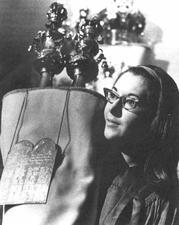Religion

Judith Plaskow
Judith Plaskow is the first Jewish feminist to identify herself as a theologian. Deeply learned in classical and modern Christian theology yet profoundly committed to her own Judaism, Plaskow created a distinctively Jewish theology acutely conscious of its own structure and categories and in dialogue with the feminist theologies of other religions.
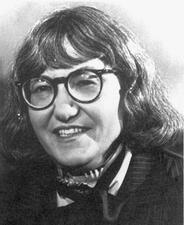
Poetry in the United States
Poland: Early Modern (1500-1795)
Polish Jewish Women played a complex role in their society and culture during the early Modern Period. This role was usually gender segregated, but upon a closer look, was more gender flexible than one might think.
Tamar De Sola Pool
Born into a family deeply involved in Jewish activism and scholarship, Tamar De Sola Pool spent over a decade as both a Hadassah chapter president and later Hadassah’s national president. She wrote two books in collaboration with her husband, volunteered at displaced persons camps in Cyprus, and helped resettle Jewish children in Palestine with Hadassah.
Post-Biblical and Rabbinic Women
IIn antiquity, the treatment of women drew from patriarchal biblical traditions. Despite a few notable exceptions, women had minimal legal rights but were active participants in alternative Jewish sects and could hold office. As rabbinic material was codified, control over women increased, although the literature was not exclusively restrictive towards women.
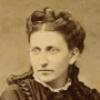
Mary Goldsmith Prag
One of California’s first Jewish educators, Mary Goldsmith Prag came to San Francisco as a young child during the Gold Rush. She became a religious and secular teacher, an administrator, a fighter for equal rights for women, and the mother of the first Jewish congresswoman, Florence Prag Kahn.
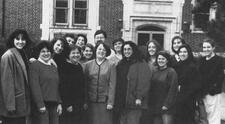
Sally Jane Priesand
On June 3, 1972, when Cincinnati’s Hebrew Union College-Jewish Institute of Religion ordained Sally Jane Priesand rabbi, she became the first woman in America to become a rabbi and the first in the world ordained by a rabbinical seminary.
Puah: Bible
Puah and Shifrah were the midwives who defied Pharaoh’s orders and allowed Israelite women to birth their sons in safety. It is not clear whether the midwives were Egyptian or Israelite. They may have been overseers for Pharoah’s harem and held positions of honor.
Puah: Midrash and Aggadah

Queen of Sheba: Bible
Sheba, despite the mystery of her origins, presents us with a valid memory of women who managed to carve out high-ranking positions for themselves in worlds dominated by men. An independent woman ruling a fabulously wealthy Arabian or African kingdom to the south of Judah, this unnamed queen appears in one of the many stories emphasizing the grandeur of Solomon’s court and his international reputation for extraordinary wisdom.

Queen of Sheba: Midrash and Aggadah
The midrash tells the story of how the Queen of Sheba traveled to meet King Solomon and witness his wisdom, posing several scenarios and riddles to test him. After being impressed by his answers, she commits herself to God and converts.
Qumran
Whether or not women were a part of the Essenes’ Qumran settlement, they do appear in Qumran literature. Women in the halakhic writing are only discussed when there are explicit rulings about women’s issues. Halakhic literature shows that women were excluded from all facets of public life and generally were subject to strict halakhic rulings.

Rabbis in the United States
Since 1972, when Sally Priesand became the first woman in the world ordained by a rabbinical seminary, hundreds of women have become rabbis in the Reform, Reconstructionist, and Conservative movements. In recent years, womenhave also entered the Orthodox rabbinate, using a variety of titles, including rabbi.
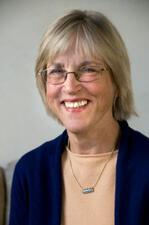
Rachel Cowan
From New York to Israel, Rabbi Rachel Cowan had a hand in developing many aspects of Jewish life during the second half of the twentieth century. She was a pioneer in pushing for inclusivity in Jewish spaces and went to great efforts to make Judaism more accessible to those unfamiliar to it.
Rachel, Wife of Rabbi Akiva
Rachel is the name given to the wife of Rabbi Akiva in medieval sources. Various stories in rabbinic literature depict her as supporting her husband in his efforts to study Torah with great personal sacrifice.

Rachel: Bible
The younger daughter of Laban and wife of Jacob, Rachel is the mother of Joseph and Benjamin, who become two of the twelve tribes of Israel (Gen 35:24; 46:15–18). Rachel, who died young, becomes an image of tragic womanhood. After the biblical period, “Mother Rachel” continued to be celebrated as a powerful intercessor for the people of Israel.

Rachel: Midrash and Aggadah
Rachel is depicted in the Torah as Jacob’s beautiful and beloved wife. The midrash portrays Rachel as a prophetess, and her statements and the names she gave her sons contain allusions to the future. Rachel’s merit continued to aid Israel even many years after her demise.
Rahab: Bible
A Canaanite woman living in Jericho, Rahab is a prostitute who is also a biblical heroine. Rahab, who begins as triply marginalized (Canaanite, woman, and prostitute), moves to the center as bearer of a divine message and herald of Israel in its new land. She is remembered in Jewish tradition as the great proselyte, as ancestress of kings and prophets, and, in the New Testament, as ancestress of Jesus.
Rahab: Midrash and Aggadah
The Rabbis sing paeans of praise of Rahab for her beauty and wisdom. In many midrashim, Rahab comes to symbolize the positive influence Israel exerts on the surrounding Gentile nations, as well as successful conversion. Her ability to mend her ways was exemplary for ensuing generations, who used Rahab’s story to request divine mercy and pardon for their actions.
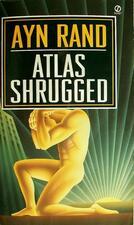
Ayn Rand
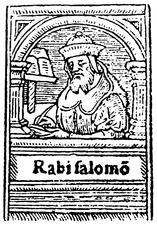
Rashi
The medieval commentator Rashi, through his commentary and halakhic works, was an advocate for improving the status of women, introducing innovative exegesis to support his views. His followers, the Tosafists, would continue to innovate and support Jewish women.

Rebekah: Bible
Rebekah is the second matriarch in Genesis and shares two problems with Sarah, the first matriarch: barrenness, and being passed off as her husband’s sister. But her story is more extensive; she is a dynamic character in a long narrative describing how she becomes Isaac’s wife. Her agency continues when she bears twins and secures the birthright for her favored son.

Rebekah: Midrash and Aggadah
Rebekah, one of the four Matriarchs, is characterized by the Rabbis as a prophet and a righteous woman. The midrash transforms Rebekah from an individual character with a personal story into a symbol of the realization of God’s promise to Abraham.
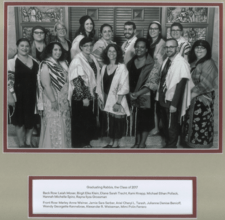
Graduating Rabbis, the Class of 2017
Back Row: Leiah Moser, Birgit Elke Klein, Diane Sarah Tracht, Kami Knapp, Michael Ethan Pollack, Hannah Michelle Spiro, Rayna Ilyza Grossman
Front Row: Marley Anne Weiner, Jamie Sara Serber, Ariel Cherly L. Tarash, Julianne Denise Benioff, Wendy Georgette Kennebrae, Alexander R. Weissman, Mimi Polin Ferraro
Reconstructionist Judaism in the United States
